These summer-drinks-with-ice-cubes filled days of early July beg for a title like this. Further inspiration came from the group of rock-climbing nymphs I recently encountered in the garden of York House, in Twickenham.
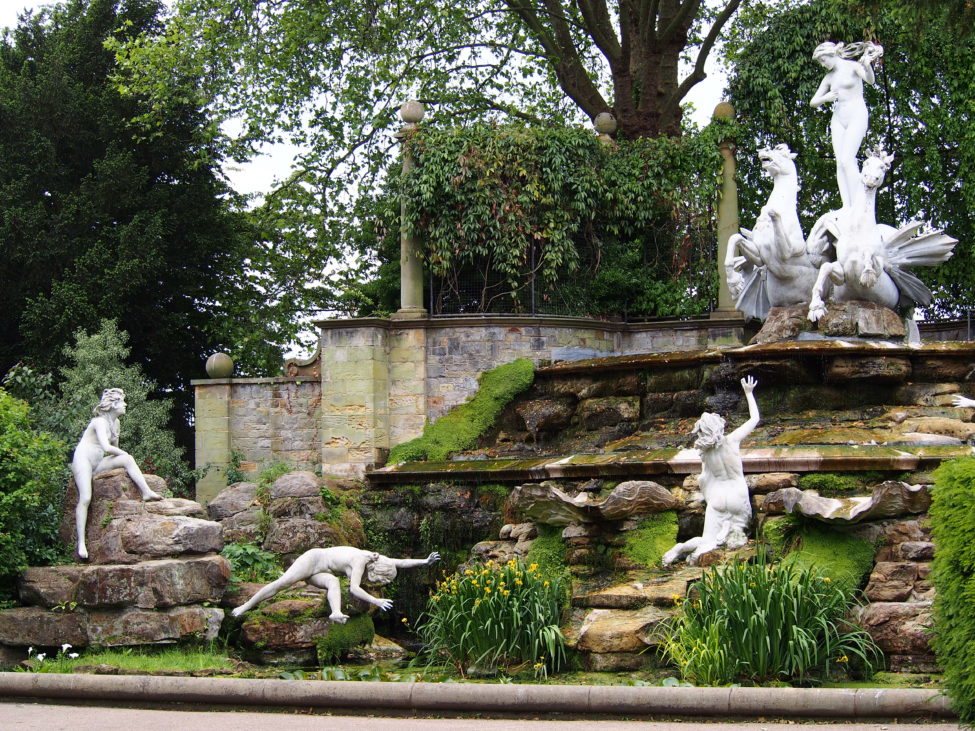 This group of Oceanides has been the focal point of the riverside garden1A part of the garden we’d call overtuin in Dutch, because seen from the house, it is on the other side of a public road. for over a century. They were placed in this part of York House’s garden in 1909, but the statues were originally created for the Surrey property of James Whitaker Wright.2This was called Lea Park, the name was later changed into Witley Park. This ‘financier’ was found guilty of fraud in 1904, after which he swallowed a cyanide pill and died.
This group of Oceanides has been the focal point of the riverside garden1A part of the garden we’d call overtuin in Dutch, because seen from the house, it is on the other side of a public road. for over a century. They were placed in this part of York House’s garden in 1909, but the statues were originally created for the Surrey property of James Whitaker Wright.2This was called Lea Park, the name was later changed into Witley Park. This ‘financier’ was found guilty of fraud in 1904, after which he swallowed a cyanide pill and died.
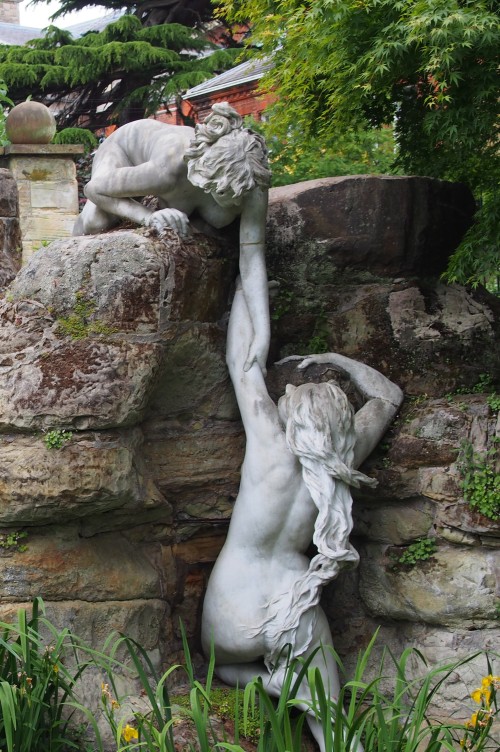 The group of statues from his collections found their way to several new owners, among whom Sir Ratan
The group of statues from his collections found their way to several new owners, among whom Sir Ratanji Tata, the owner of York House.3Beale Park near Pangbourne is where similar statues are kept. Some of these statues were still packed in the original boxes in which they had arrived from Italy a few years earlier. The source for that story is remarkably credible. He even tells us the company responsible for the installation of this amputated group sent him to Italy to speak to an ‘Art Professor’ who possibly was responsible for the original design.4To, not necessarily with, as he did not speak English, and they lacked any knowledge of the Italian language. It is assumed that the statues were made by the Roman sculptor Orazio Andreoni.5Although the name of Italian sculptor Marabitti (fl 1904) is also mentioned by the Register of Parks and Gardens of Special Historic Interest (via Parks and Gardens UK).
In accordance with the drinks mentioned earlier, the philanthropic Tata family often used the site in front of this cascade for summer parties. Today the statues are known as Oceanids, representing just eight of the three thousand mythological daughters of Oceanus and his sister Tethys.6Locally they seem to be known simply as the Naked Ladies.
But there is more to the story. The top figure, rushed into the scene by two wild-eyed eh.. aquatic horses, can’t be a nymph herself.
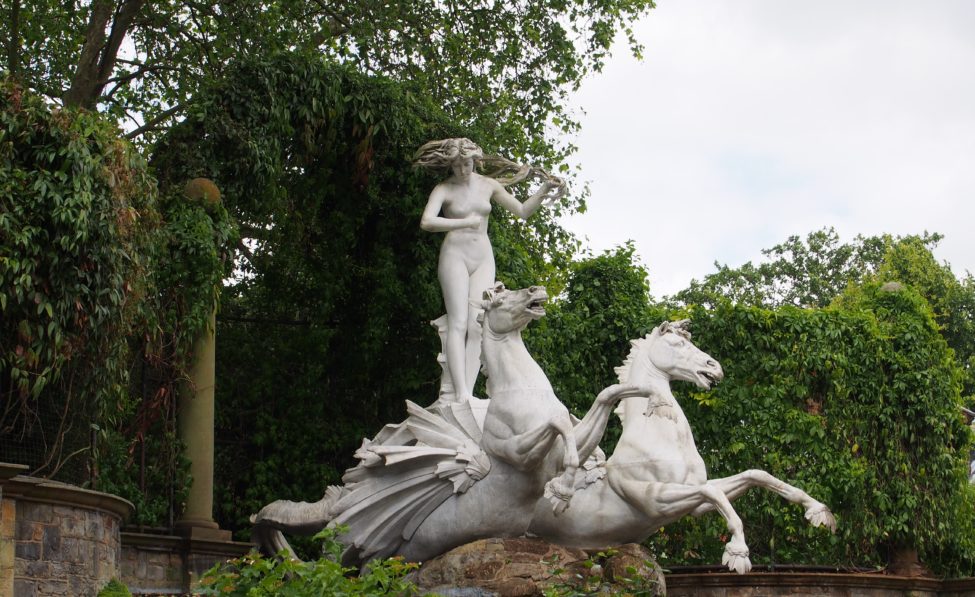 The others are looking up
The others are looking up to at her in admiration, surprise and in awe (apart from the one almost tumbling over into the water and the two others pictured above). She, meanwhile, does not seem to acknowledge their existence: her introspective gaze and entire posture indicate absent-mindedness.
To further emphasize the difference in status between the statues, a pearl is presented to her by the only nymph wearing some form of clothing -clinging tight to her body because she has just emerged from the waters, but nonetheless some decorum is considered.
The fact that the central figure is handling her long loose hair, and is honored by nymphs associated with the sea or ocean, could indicate that she represents Venus, a version of the Venus Anadyomene-type: ‘Venus emerging from the sea’.7This ‘Venus emerging from the sea’-image goes back to Pliny the Elder’s description of a painting by Apelles that had been brought to Rome.
While aquatic horses are not associated with Venus at all, wearing her long hair loose (sometimes wringing the water out of her hair) is an essential part of that image. For Venus, born out of the sea as an adult woman, the Oceanids at her feet can be logical companions, although they also do not occur in the story of her birth. The pearl she is presented with usually grows in a shell, precisely the vessel in which Venus after birth was blown ashore by Zephyr.
Closely associated with the Birth of Venus subject matter, the Venus Anadyomene was a popular subject in the late 19th century. Botticelli’s birth of Venus was particularly popular among British visitors to the Ufizzi in Florence. The York House version could be deliberately chosen to depict a moment when the new-born was still overwhelmed by the sudden rush of events.
The aquatic horses are an essential part of depictions of Oceanus himself, when they trawl his chariot through the waves. Knowing the provenance of this group, these horses could have originally belonged to a different set of statues ordered by Whitaker Wright. Or, for that matter, the statue that possibly is a Venus Anadyomene could originally not have belonged to this particular group at all.8But the Italian fountain at Beale Park does not have an Oceanus, nor does it seem to miss a Venus.
It seems to me that these statues tell a different story than previously presumed, and they need to be reexamined. If possible, other statues taken from Whitaker’s collection should be taken into account as well.
- Edited to correct the name of Sir Ratan Tata, who I had called Ratanji. It appears that Ratanji was how he was generally known, but Ratan was his official name.
- Updated @ July 25, 2015: I’ve added a comment to reflect the fact that since 2007 the central figure has indeed been tentatively identified as a Venus. With links to sources.
Location of York House in Twickenham.
Footnotes
| ↑1 | A part of the garden we’d call overtuin in Dutch, because seen from the house, it is on the other side of a public road. |
|---|---|
| ↑2 | This was called Lea Park, the name was later changed into Witley Park. |
| ↑3 | Beale Park near Pangbourne is where similar statues are kept. |
| ↑4 | To, not necessarily with, as he did not speak English, and they lacked any knowledge of the Italian language. |
| ↑5 | Although the name of Italian sculptor Marabitti (fl 1904) is also mentioned by the Register of Parks and Gardens of Special Historic Interest (via Parks and Gardens UK). |
| ↑6 | Locally they seem to be known simply as the Naked Ladies. |
| ↑7 | This ‘Venus emerging from the sea’-image goes back to Pliny the Elder’s description of a painting by Apelles that had been brought to Rome. |
| ↑8 | But the Italian fountain at Beale Park does not have an Oceanus, nor does it seem to miss a Venus. |

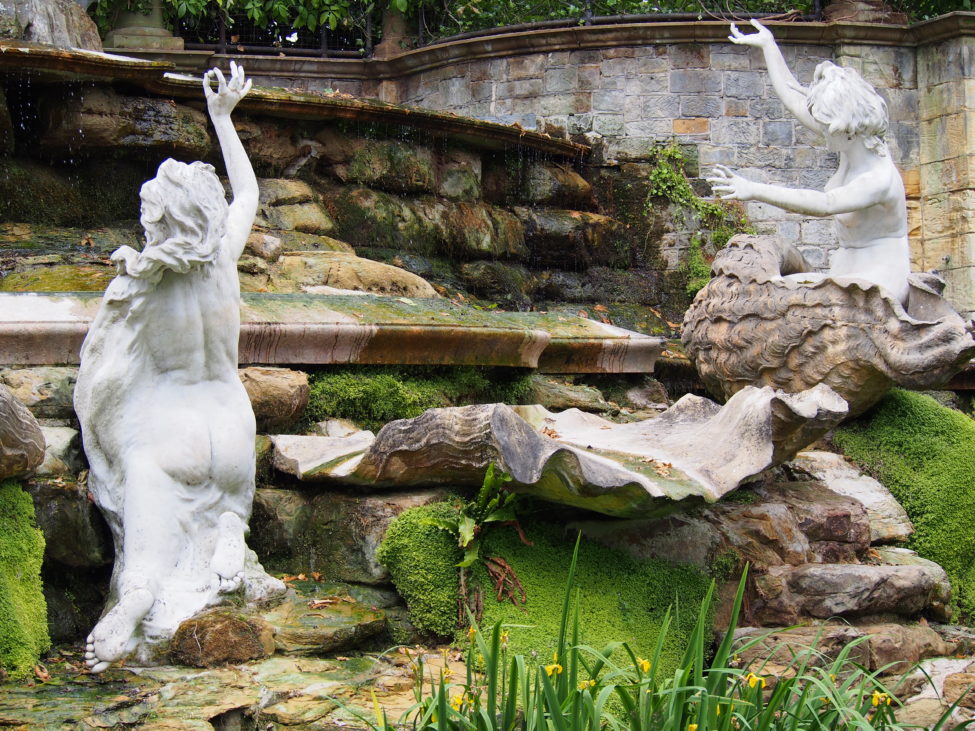
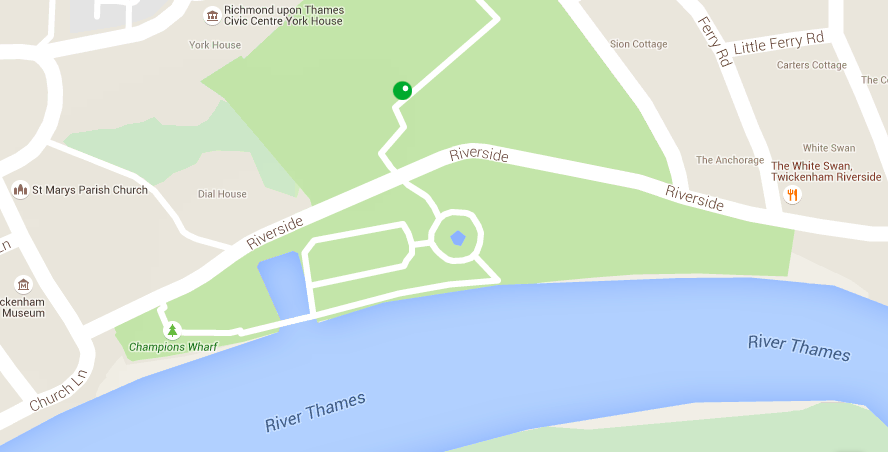


Ah, good! Venus wás spotted earlier. Faith in humanity restored :-)
Earlier this year the blog 3DaysinLondon wrote a piece in which Venus was identified as such: http://3daysinlondon.info/not-too-far-from-london-at-all/york-house-oceanides-twickenham/.
In May 2011 The Victorian Web also mentioned Venus as the central standing figure: http://www.victorianweb.org/sculpture/spalmach/2.html. At the bottom of the page some sources are listed, of which one in print and the other links to the site of the company that restored the cascade in 2007: http://www.holdenconservation.co.uk/case-studies/sculpture/twickenham.html. According to Holden Conservation the statues ‘(…) portray Venus riding a pair of Hippocampus surrounded by seven white marble nymphs.’
The last link is a record of the Public Monuments & Sculpture Association (PMSA), which mentions other possible sculptors of the group, Mario Rutelli (1859-1941) and O. Spalmach, a sculptor in the studio of Orazio Andreoni:
http://www.vads.ac.uk/large.php?uid=71402&sos=3
The PMSA hesitantly identifies the statue as Venus, and the subject as ‘possibly the Birth of Venus, although exact identity of central figure unknown’.
It seems that at least since 2007 the central figure has been increasingly identified as Venus, but still with doubt. Unfortunately even that tentative identification was not included in the text on the sign standing right next to the Cascade -which does mention the 2007 restoration.